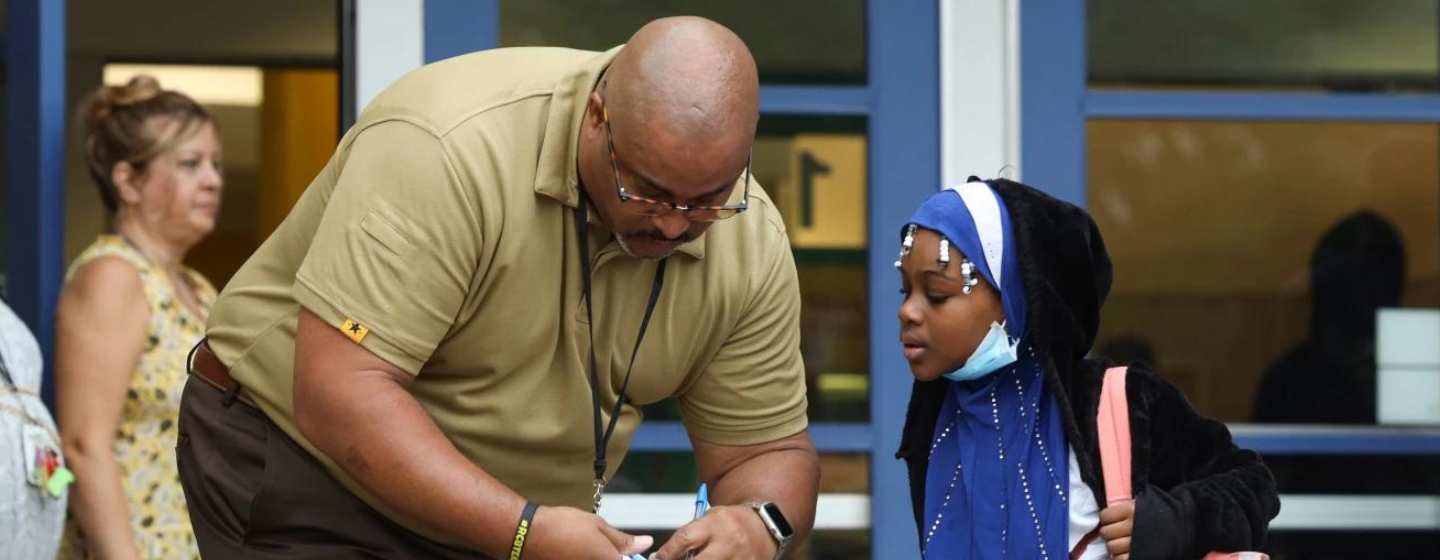As school districts across New York state prepare budgets for the next academic year, a question remains: Will the state budget match Gov. Kathy Hochul’s proposal?
If so, school advocates say that would mean hundreds of millions of dollars less in foundation aid. That’s because the budget proposal includes an inflation calculation lower than the current rate.
“That downward pressure ... just reduces aid for all districts to the tune of north of $400 million or so,” Brian Fessler, director of governmental relations at the New York State School Boards Association, told WXXI News this week. “So, we're hoping to see that proposal rejected by the Legislature.”
But Hochul has argued that’s a misrepresentation of her proposal. Earlier this month, Hochul said the change would lower the rate of increase in aid, but it would not cut aid.
In total, she said schools would receive $825 million more than last year if her proposed budget is adopted.
“When you don't keep the historic increases in place every year, it is not a cut,” Hochul said. “And that's what they're not understanding.”
Foundation aid matters, Fessler said, because it’s money that schools can use as needed.
“So if a district needs or wants to focus on school safety, or school meals, or early academic services, or fill-in-the-blank, those foundation aid dollars are flexible in that way,” Fessler said.
If there’s a reduction in foundation aid going into the next school year, at a time when federal pandemic relief grants are ending, that would be especially challenging for the Big Five districts in Rochester, Buffalo, Syracuse, Albany, and New York City.
“The governor's adjustments ... would be devastating to school districts already struggling to meet the needs of some of the state's most vulnerable children,” Jennifer Pyle, executive director of the Conference of Big Five School Districts, said in testimony to state lawmakers during a public hearing earlier this month.
The adjustments Pyle referenced include a change to what’s called “hold harmless,” a policy that keeps state aid for districts from being cut from one year to the next.
“We strongly urge that the state enhance the formula's transparency, predictability, and inclusivity,” Rochester City Superintendent Carmine Peluso said at the same hearing. “The formula must be adjusted to effectively address the unique needs of students, particularly those with special programming.”
That special programming includes education services for English language learners (ELL) and students with disabilities, Peluso said.
Syracuse City School District Superintendent Anthony Davis, speaking at the hearing, said he is also concerned that his district will have enough money to support ELL and special education students.
“As you investigate how to revise the foundation aid formula, we strongly encourage the state to utilize updated census and poverty data, and increase weightings for special education, which represents about 21% of our students and English language learners,” Davis said.
There’s another looming matter concerning many districts: transportation.
The state requires all districts, about 700 in total, to transition to electric vehicles between 2027 and 2035. The year 2027 is the deadline for all new purchases, Fessler said, while 2035 is the deadline to end the use of all combustible-engine school buses.
While it may seem like a distant concern, there are significant costs and considerations for districts to sort out now, he said.
"You're talking, you know, roughly a threefold increase just in the cost of buses. Part of that is reimbursable through state transportation aid,” he said. “But in New York, there's about 45,000 school buses.”
A lack of collaboration at the state level is causing more confusion and frustration as districts attempt to navigate what he calls a “Herculean effort" to change school bus infrastructure, Fessler said.
He recommended a more coordinated approach between the state’s energy research and development department and state education officials, saying it would be a crucial partnership for a successful transition to zero-carbon emission school buses by 2035.
“A lot of aspects of this are financially challenging, even with various pots of money at the state and federal level,” he said. “This requires a ton of planning and preparation and practice. And for some of those districts, that 2027 date is incredibly challenging."
The state budget is due by April 1.
This article was originally published on WXXI. Includes reporting from Karen DeWitt with the New York Public News Network.



